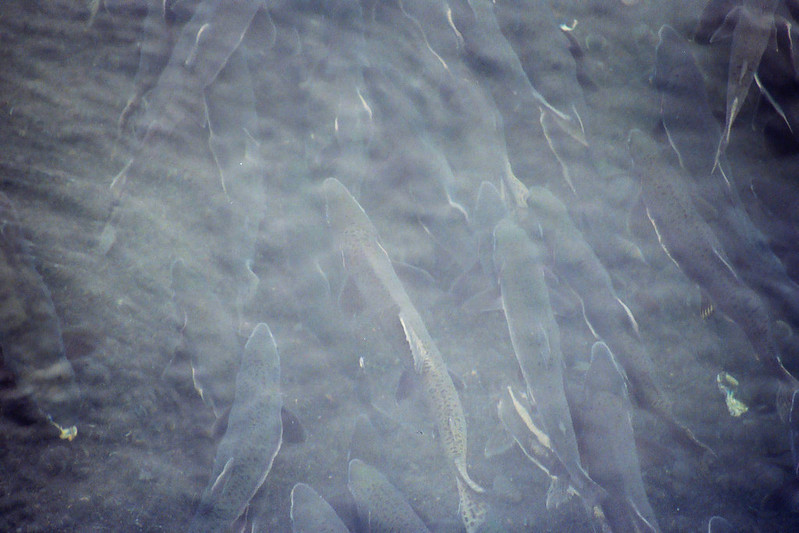Excerpt:
The massive dam-removal project on the Klamath River began living up to its lofty goal of improving fish passage this week when at least one salmon was observed swimming upriver past the sites of four former dams that had long blocked fish.
Wildlife officials said Thursday that a chinook salmon was spotted a day earlier at Spencer Creek in Oregon, suggesting that salmon have begun their much anticipated return to their historical waters above all of the demolished dams. Chinook salmon were also seen this week in a California creek above the site of the first of the former dams, where they’re believed to have started spawning in the newly opened-up habitat.
For more than a century, the iconic fish have been unable to complete their historical migration from the ocean into hundreds of miles of waterways along the California-Oregon border. Lack of access to the cold, abundant water limited their spawning and contributed to the steep decline of salmon on what was once the third-largest salmon-producing river in the West.
The $500 million dam-removal project, which wrapped up in recent weeks, was initiated to restore the natural flow of the Klamath and revive the basin’s wildlife. Salmon were not only meant to be a beneficiary of the work, but they are seen as a litmus test for the project’s success.
“The salmon remember” (where they came from), said Frankie Myers, vice chairman of the Yurok Tribe, in a statement to the Chronicle after this week’s salmon observation in Oregon.
Since the four hydroelectric dams came down, a network of scientists from tribes, state and federal governments and conservation organizations has been monitoring the river for fish that swim past the former dam sites. Sonar cameras, video stations and ground crews have all been deployed. The turbidity of the water, primarily from sediment left after the dam-removal work, had prompted many to think that salmon might wait until later in the year, at least, before returning to the waters choked off by the former dams.
On Oct. 3, however, the first salmon was seen on sonar moving through the southernmost of the former dam sites, Iron Gate Dam in Siskiyou County. Since then, at least dozens, and perhaps hundreds, of chinook have pushed through that site, scientists say.
Bob Pagliuco, marine habitat restoration specialist at the National Oceanic and Atmospheric Administration, said that even though chinook salmon typically return to the place of their birth to spawn, after two to three years in the ocean, the fish have built-in “life history strategies” that allow them to adapt to changes on the landscape and thrive in new places. He wasn’t surprised to see the fish move into areas they had not been to, though he didn’t expect it to be so soon.
“How fast it’s happening was a little surprising to me,” Pagliuco said…
Additional Reading:
the Guardian:
Klamath River dam removal: before and after images show dramatic change
Dam removal concluded a decades long fight on 2 October, which also saw Chinook salmon return to the waters…
the New York Times:
With Dams Removed, Salmon Will Have the Run of a Western River
The nation’s largest dam removal project is nearly complete after a lengthy campaign by Native tribes to restore the river at the California-Oregon border…









